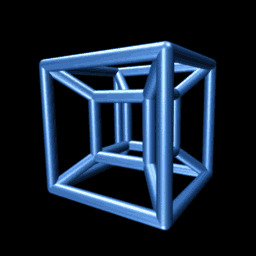The curious child of bookish parents who browses through their libraries sometimes falls down a rabbit hole while apparently reading quietly in an armchair.
Something like this happened to Ivan Horozov, PhD, the William Chauvenet lecturer in the Department of Mathematics in Arts & Sciences at Washington University in St. Louis. Horozov grew up in Sofia, Bulgaria, the child of a mathematician whose library included the book “Geometry and the Imagination” by Hilbert and Cohn-Vossen.
The book, which he says reads like a storybook rather than a textbook, explores regular geometric shapes — which mathematicians call polytopes — in two, three and four spatial dimensions.
A square is a two-dimensional polytope; its three dimensional analog is a cube and its four-dimensional analog is something called a tesseract.

Horozov is now working on the sixth four-dimensional polytope, which is, he said, the dual of the 120-cell polytope. A dual is the figure that emerges when the vertices of one figure become the faces of another and the faces the vertices. The dual of a cube, for example, is an octahedron. And the dual of the polytope made of 120 dodecahedrons is a polytope made of 600 tetrahedrons.
Even the Greeks knew about the three-dimensional polytopes, often called Platonic solids. But the four-dimensional polytopes were discovered only in the 19th century and even then the mathematician who described them was unable to get his work published because it was considered so outlandish.
After all it isn’t intuitive that there might be more than three spatial dimensions. Perhaps this is why magical properties have been ascribed to the four-dimensional polytopes. In Madeleine d’Engle’s “Wrinkle in Time,” for example, the tesseract is a time-travel device that wrinkles up the space-time continuum and creates a passage from one part of it to another.
Horozov hasn’t read “A Wrinkle in Time,” but he does follow string theory, theories in physics that predict there are extra dimensions. One version, for example, predicts spacetime has 11 dimensions and that we just don’t see anything except the three spatial dimensions and time because the extra dimensions are “compactified,” or rolled up tight.
String theory, like the four-dimensional polytopes, is still very much an imaginative exercise, but should experimental evidence of its validity ever surface, we will all have to cultivate multi-dimensional thinking.